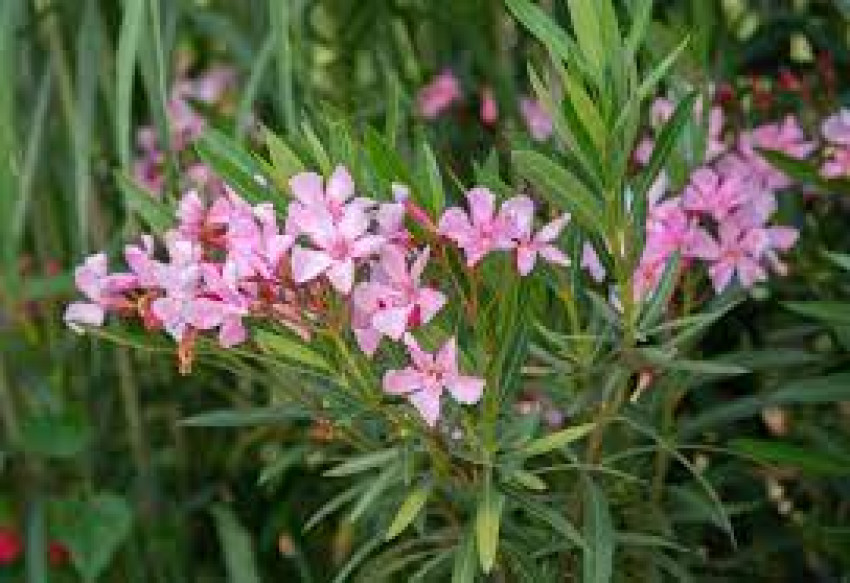
Introduction: Nerium oleander plant, commonly known as oleander, is a captivating yet notorious flowering shrub native to the Mediterranean region, Asia, and parts of Africa. Despite its exquisite blooms and lush foliage, oleander harbors a dark secret—the toxicity of its leaves, stems, and flowers. Revered for its ornamental value and resilience, oleander is both admired for its beauty and respected for its potential danger.
Botanical Characteristics: Belonging to the Apocynaceae family, oleander is an evergreen shrub that can grow up to 20 feet in height, with lance-shaped leaves arranged in whorls along the stems. The plant produces an abundance of showy, funnel-shaped flowers in shades of white, pink, red, or yellow, blooming from late spring through autumn. Despite its toxicity, oleander's striking appearance and tolerance to various growing conditions make it a popular choice for landscaping and ornamental purposes in gardens, parks, and public spaces.
Toxicity and Health Risks: One of the most notable aspects of oleander is its high toxicity, containing compounds such as cardiac glycosides and other toxins that can be lethal if ingested. All parts of the plant, including the leaves, stems, flowers, and sap, are poisonous and can cause severe symptoms if consumed, including nausea, vomiting, abdominal pain, irregular heart rhythms, and even death in extreme cases.
Due to its toxicity, oleander should be handled with caution, and precautions should be taken to prevent accidental ingestion, especially in households with children and pets. Proper disposal of trimmings and careful consideration of planting locations are essential to minimize the risk of exposure.
Cultural Significance: Despite its toxicity, oleander holds cultural significance in various regions around the world. In some Mediterranean countries, oleander is associated with beauty, love, and romance, and its flowers are often used in bouquets and floral arrangements. In ancient Greek mythology, oleander was linked to the story of Nerium, the daughter of the sea god Nereus, and it was believed that planting oleander near a home would protect it from evil spirits.
Landscaping and Ornamental Use: Oleander's resilience, drought tolerance, and ability to thrive in a range of soil types make it a popular choice for landscaping in regions with hot, arid climates. It is commonly used as a hedge, screen, or specimen plant in gardens, parks, and public landscapes, adding color and structure to outdoor spaces. Despite its toxic nature, oleander's stunning blooms and low maintenance requirements continue to attract gardeners and landscapers seeking beauty and versatility in their landscapes.
Conclusion: Nerium oleander is a captivating yet controversial plant, admired for its beauty but respected for its toxicity. While its showy flowers and lush foliage enhance landscapes and gardens, caution must be exercised when handling and growing oleander due to its potential health risks. By understanding and respecting oleander's toxic nature, gardeners can appreciate its beauty while ensuring the safety of themselves, their families, and their pets.



